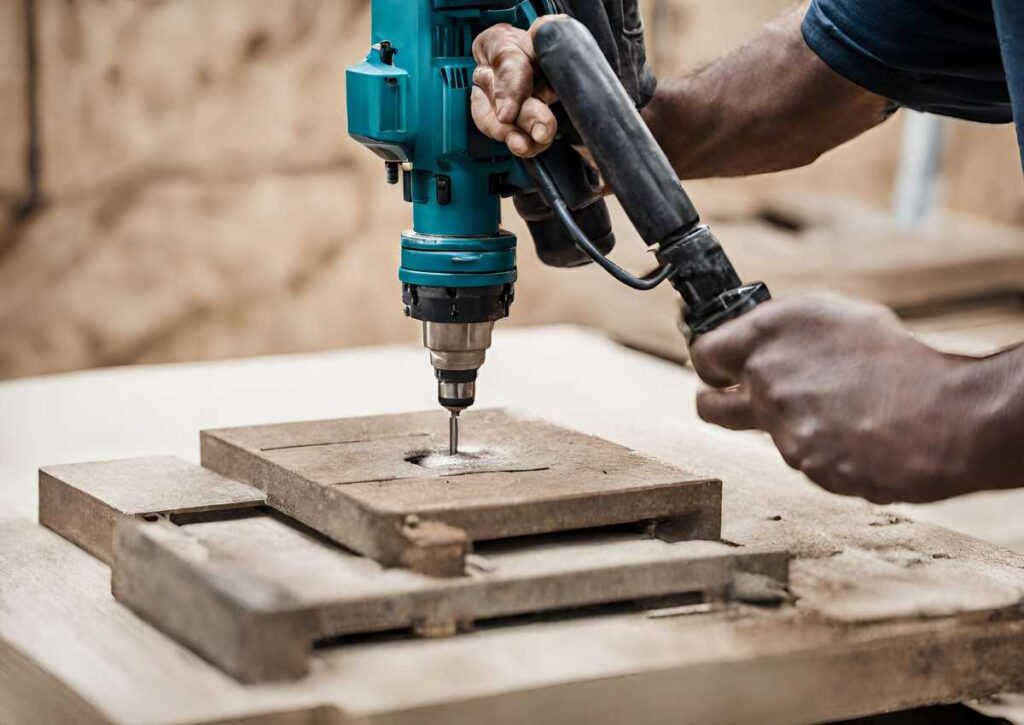Greetings, fellow DIY enthusiasts and construction aficionados!
Today, we embark on an in-depth journey into the intricate world of screws, focusing on the captivating divergence between self-tapping and self-drilling screws.
Self Tapping vs Self Drilling: Self-tapping screws need pre-made holes, while self-drilling screws create their paths as they advance, differing in their initial approach to threading into materials.
If you’ve ever found yourself pondering the dissimilarities between these two essential types of fasteners, you’re in for a treat!
Get ready to unravel the secrets of these unsung heroes of construction.
Understanding Self-Tapping Screws
Self-tapping screws are the unsung heroes of efficiency in the fastener universe. They possess a remarkable ability to create their threads while they penetrate materials.
This means they can burrow into materials like steel, aluminium, or plastic without the need for pre-drilled holes. No pilot holes are required—how amazing is that?
The heartwarming part about self-tapping screws is their incredible time-saving feature.
They efficiently cut through materials, saving both time and effort, making them trailblazers in filling functionality gaps.
Just imagine: no more inventory headaches due to various drill bit sizes—it’s a DIY dream come true!
Unveiling Self-Drilling Screws

Now, let’s pivot to the fascinating self-drilling screws. These screws are multifaceted, unlike their self-tapping counterparts.
They don’t just create their threads; they have the gargantuan ability to drill pilot holes as they fasten into materials. It’s essentially a two-in-one deal!
A drill point at the tip that’s shaped to perfection. This feature prevents material cracking, especially in tough projects like metal building construction or fibreglass installations.
Plus, they’re the guardians against expensive machine screws and tedious drill bit changes—talk about a win-win situation!
Different Yet Similar: Self Tapping vs Self Drilling
At first glance, one might think that self-tapping and self-drilling screws are two sides of the same coin. But here’s the twist—they differ significantly in their initial approach.
Self-tapping screws necessitate a pre-made hole, while self-drilling screws carve their paths as they go.
Identifying the Ideal Applications

So, how do you determine which screw to use for your project? Well, it depends on the specific task at hand.
If you’re working with softer materials like plastic or thin sheet metal, self-tapping screws might be your best companions.
Yet, when it comes to tackling tougher ventures involving steel or thicker metals, self-drilling screws swoop in as the superheroes of choice!
Further Insights into Self-Tapping Screws
Let’s deep-dive into self-tapping screws and their heartwarming efficiency. These screws possess a unique ability to create their own threads, eliminating the need for pre-drilled holes.
They work wonders in scenarios where convenience and speed are paramount. However, they might not be the ideal choice for tougher materials that demand a stronger grip or higher torque.
The Intricacies of Self-Drilling Screws

Self-drilling screws, on the other hand, are like the Swiss Army knives of fasteners. Their ability to drill pilot holes as they penetrate materials is nothing short of inspiring.
These screws excel in demanding applications where material cracking is a concern or where quick, efficient fastening is necessary.
The ultimate choice?
Choosing between self-tapping and self-drilling screws can be daunting.
It’s crucial to evaluate your project’s requirements, considering factors such as material type, thickness, and the level of torque needed.
Both types have their own unique strengths, and the key is to match these strengths to the demands of your project.
Conclusion
In the end, both self-tapping and self-drilling screws are indispensable allies in your construction arsenal.
Their differences lie in their approach, functionality, and the scenarios where they shine brightest.
It’s not about one being better than the other; it’s about finding the right fit for your project’s needs!
So, whether you’re constructing, repairing, or creating something inspiring, you’ll be armed with the knowledge to make a guilt-free, hilarious, and definitely informed decision!
Keep building and creating wonders, you magnificent DIYer!
FAQs
Are self-tapping screws and self-drilling screws the same thing?
No, self-tapping screws and self-drilling screws differ in their initial operation. Self-tapping screws require pre-made holes, while self-drilling screws create their path as they advance.
Which type of screw is suitable for softer materials like plastic or thin sheet metal?
For softer materials, self-tapping screws work best due to their ability to navigate these materials without needing pre-drilled holes.
Do self-drilling screws prevent material cracking in metal building construction?
Yes, self-drilling screws come equipped with features that help prevent material cracking, especially in metal building construction projects.
Are self-tapping screws more time-saving compared to self-drilling screws?
Self-tapping screws save time by eliminating the need for pre-drilled holes, while self-drilling screws have their advantages in different scenarios.
What is the primary difference between self-tapping and self-drilling screws?
The primary difference lies in their approach: self-tapping screws require pre-existing holes, whereas self-drilling screws create their paths as they advance into materials.









